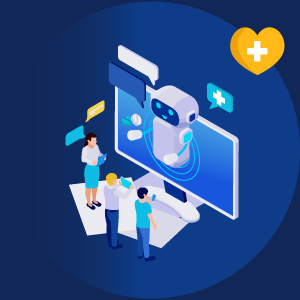Law enforcement professionals provide a crucial function in society. By leveraging modern technology advancements, agencies can achieve that quality of service and keep the American people safe from ongoing threats. The International Association of Chiefs of Police (IACP) Annual Conference and Exposition 2023 offered law enforcement agencies and security professionals the opportunity to learn from experts in the top fields, develop partnerships and get access to technologies that will aid in navigating the current landscape.
Securing Sensitive Law Enforcement Data
A reoccurring challenge for law enforcement is an increase in ransomware attacks against them. Agencies reported a significant jump in attacks in the last two years, from 34% of departments reporting a ransomware hack in 2021, to nearly 69% in 2023. The average ransomware payment increased 500% in 2023 to over $1 million and over 25% of these attacks began with a phishing or malicious email. To combat this, agencies and departments must strengthen their cybersecurity postures and align with the NIST Cybersecurity Framework. Speakers at IACP provided five themes of questions agencies should ask to evaluate their cyber readiness:
- Identify: Is our agency able to find weak spots, prioritize our response to them and track them? Have we done asset management, risk assessments and supply chain risk management?
- Protect: Is our “front door” locked? Are we taking proactive measures to protect our data today? Have we implemented identity and access management (IAM), awareness and training and overall data security procedures?
- Detect: Can we tell when something goes wrong? Can we identify issues confidently and quickly in the case of an anomaly?
- Respond: How do we respond when bad things happen? Have we instituted clear communication, analysis, mitigation and response planning?
- Recover: Are we ready to recover and learn from an incident and make the necessary changes to ensure it does not happen again?
 Addressing these questions and acting on them means committing to fostering a culture of security and secure best practices. There are many technologies that can aid in this endeavor including artificial intelligence (AI) Ops, which assesses system patterns and behaviors to identify and surface anomalies; IAM, which provides an extra layer of authentication through biometrics and contextual authorization; and cloud and virtual environments, which agencies can employ in combination with infrastructure-as-a-service to enhance security.
Addressing these questions and acting on them means committing to fostering a culture of security and secure best practices. There are many technologies that can aid in this endeavor including artificial intelligence (AI) Ops, which assesses system patterns and behaviors to identify and surface anomalies; IAM, which provides an extra layer of authentication through biometrics and contextual authorization; and cloud and virtual environments, which agencies can employ in combination with infrastructure-as-a-service to enhance security.
The Federal Bureau of Investigation (FBI) Criminal Justice Information Services (CJIS) has released two new updates to its security policy, Versions 5.9.1 and 5.9.2, based on the key pillars of data confidentiality, integrity and availability. These policies now require initial security training for personnel who need access to Department of Justice (DOJ) materials as well as the completion of yearly training for the extent of their access time. In conjunction with these policies are key technologies to safeguard data such as IAM, multi-factor authentication (MFA), system monitoring and others. Employing these solutions and safety measures boost community trust in law enforcement and the security of digital evidence. CJIS policies also reiterate to law enforcement officers the importance of doing their due diligence in securing both the data and their vital tools that otherwise could be rendered obsolete in the event of an attack. The Cybersecurity and Infrastructure Security Agency (CISA) has dedicated funding for state agencies to help with this endeavor of protecting the LE cyber space.
Rising Innovative Technologies for Law Enforcement Agencies
Implementation of body worn cameras (BWC) has been a growing initiative for law enforcement (LE) agencies for the last several years. With the Bureau of Justice Assistance’s Body Worn Camera Policy and Implementation Program (BWCPIP) more departments are able to receive grant funding and training for BWCs allowing more widespread usage of the technology especially in small, rural or tribal LE agencies. So far, this program has provided over $180 million in funding towards this effort. To support these BWC data advancements and further the technology benefits, LE agencies are looking for cloud storage and organization solutions, interoperability for data sharing, AI algorithms to efficiently tag videos and analytics software to pull relevant insights.
AI in the law enforcement field also provides many other time saving benefits including automating some procedures and everyday tasks like report writing. Before implementing AI, agencies must audit their current processes to assess the specific use cases and preemptively address any challenges. Establishing guidelines for AI usage by law enforcement, not only assists internally with governance and accountability, but also helps build public trust by delineating the technology capabilities.
Drones are another up-and-coming technology displaying value across public safety and emergency response. In the aftermath of Hurricane Ian in 2022, LE agencies deployed unmanned aircraft systems (UAS) and, through these drones, were able to conduct situation assessments, wide area searches, mapping of critical roadways to expedite the movement of resources and more. This UAS teaming approach has increased the speed and efficiency of first responders, as well as the ability to easily share the information with other agencies.
Whether it is body worn cameras and drones, or AI, cloud and other solutions, security must be baked into the technology and operational processes. As partners in this current landscape, every party involved both in law enforcement and industry has the responsibility to educate themselves and maximize collaboration and the technologies available to continue to make the United States a safe place.
To learn more about Carahsoft’s Law Enforcement Technology Solutions, visit our vertical portfolio and start your journey to enabling a safer tomorrow.
*The information contained in this blog has been written based off the thought-leadership discussions presented by speakers at the IACP Annual Conference and Exposition 2023.*

 AI can significantly reduce the administrative burden for medical providers by automating routine tasks and increasing bandwidth for front line staff to complete other medical duties. A hallmark capability for AI is analyzing data which it can aggregate from wide pools of information to suggest electronic health record (EHR)-based interventions, predict possible future patient ailments and offer a more unified, comprehensive picture. In a post-COVID-19 world, AI healthcare data applications offer the extremely relevant and desired ability of anticipating future public health crises through research and analytics. These AI forecasts can accelerate understanding for policy creation, reinforce healthcare resources and provide precision public health.
AI can significantly reduce the administrative burden for medical providers by automating routine tasks and increasing bandwidth for front line staff to complete other medical duties. A hallmark capability for AI is analyzing data which it can aggregate from wide pools of information to suggest electronic health record (EHR)-based interventions, predict possible future patient ailments and offer a more unified, comprehensive picture. In a post-COVID-19 world, AI healthcare data applications offer the extremely relevant and desired ability of anticipating future public health crises through research and analytics. These AI forecasts can accelerate understanding for policy creation, reinforce healthcare resources and provide precision public health.